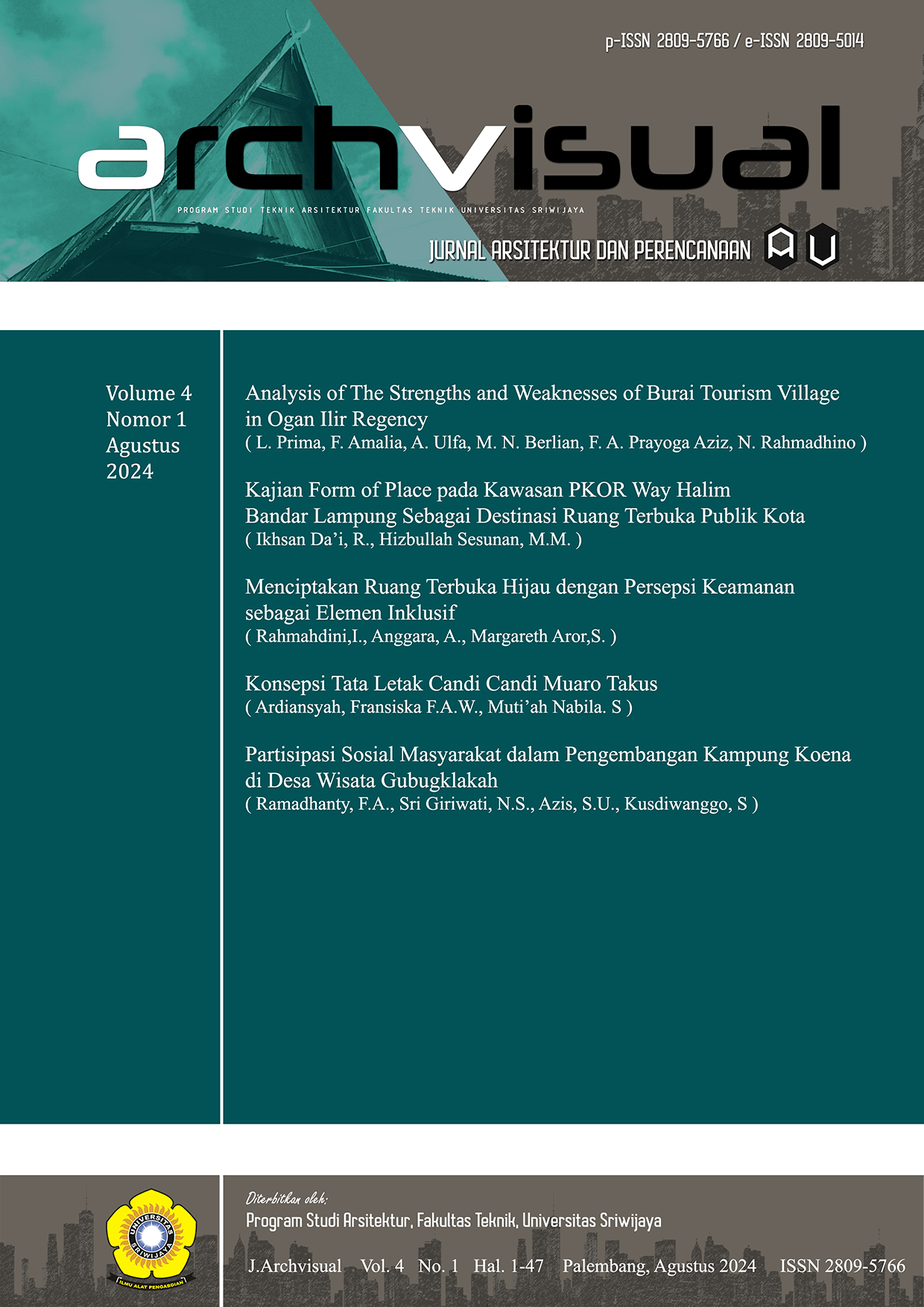Konsepsi Tata Letak Candi Candi Muaro Takus
Main Article Content
Abstract
The discovery of ruins of temple buildings were generally discovered by colonial peoples, both Dutch and British, in the 19th and 20th centuries, with the form almost no longer intact, making it very difficult to identify and guarantee the correctness of the architectural form after renovation. The restoration results carried out by archaeologists, especially at temples in Sumatra, are generally only limited to the foot of the temple or the foundations. However, the layout and orientation of the temple buildings are visible, providing a solid guide and basis for interpreting the layout and orientation of temples in Sumatra. In this research, researchers took the case of temples in Sumatra, including Bumiayu Temple, Muaro Jambi Temple, and Muaro Takus Temple. The research methods chosen were field studies and literature studies with a qualitative approach. An important discovery in this research is the configuration of the Muaro Takus Temple as a replica of the mountain cluster on Bukit Barisan to the west and southwest of the temple, whereas in the case of the Muaro Jambi site, the natah room or central courtyard. This study of spatial planning is very important because it is related to the zoning, orientation and grouping of buildings in temple clusters in Sumatra
Article Details
Section

This work is licensed under a Creative Commons Attribution-NonCommercial 4.0 International License.
How to Cite
References
Ayeris, P. T., & Herwindo, R. P (2023) Studi Penjajaran Candi Budha di Padang Lawas, Sumatera Utara, dan Mataram Kuno, Riset Arsitektur (RISA), vol. 7, no. 01, pp. 66-83.
Dutta, T., & Adane, V. S (2014) Symbolism in Hindu Temple Architecture and Fractal Geometry-'Thought Behind Form', International Journal of Science and Research (IJSR), vol. 3, no. 12, pp. 489-497.
Dwijendra, Achwin (2009) Arsitektur Bangunan Suci Hindu Berdasarkan Asta Kosala Kosali, Udayana University Press: Bali.
Halim, A (2017) The Meaning of Ornaments in The Hindu and Buddhist Temples on The Island of Java (ancient-middle-late classical eras), Riset arsitektur (RISA), vol. 1, no. 02, pp. 170-191.
Kamrich, Stella (1946) The Hindu Temple, vol. I, University of Calcuta.
Lim, H. S (2019) Kearifan Lokal dari Situs Candi Nusantara, Dhammavicaya: Jurnal Pengkajian Dhamma, vol. 3, no. 1, pp. 22-27.
Nahrudin, N., Cahyana, Y., & Baihaqi, K (2023) Deteksi Bentuk Candi Jiwa dan Candi Blandongan Menggunakan Algoritma Convolutional Neural Network, Scientific Student Journal for Information, Technology and Science, vol. 4, no. 1, pp. 24-30.
Sahruni, & Iqbal Birsyada, M (2021) Makna Akulturasi Hindu Budha pada Arsitektur Candi Plaosan, vol. 03, no. 02.
Sarangi, Shaswat Sekhar (2017) Influence of Vernacular Architecture in Evolutron of Temple forms of Odlha International Journal for Innovative Research In Science & techtology, vol.4.
Satria, M. W., & Diasana Putra, I (2020) The Kori Agung Character of Heritage Temples: The Architectural References of Klungkung Identity, Journal of Social and Political Sciences, vol. 3, no. 1.
Schmieke, M (2002) Vastu: The Origin of Feng Shui. Great Britain: Golo ka Books.
Siswanto, Ari (2020) Tata Spasial Cardi Batal I, II, III Di Padang Lawas Utara, Sumatera Utara, Jurnal Lingkungan Binaan, vol.1, pp. 63-68.,
Tuyu, M. A., Rahadhian, P., & Herwindo, S. T (2021) Relation of Typomorphology of Hindu and Buddist Temples in the Ancient Mataram. Riset Arsitektur (RISA), vol. 5, no. 2, pp. 102–116.
Wahyudi, D. Y., Aris Munandar, A., & Setyani, T. I (2021) The Shiva-Budhist Comcept in the Temple of Singhasari-Majapahit Periods, vol. 6, no.2, pp. 872–883.
Wirasanti Niken (2016) Struktur dan Sistem Tarda Ruang Sakral Candi (Kasus Cardi-cardi Musa, Mataram Kura Abad IX Miseli), International Seminar Prasasti III: Curkit Research in Linguistik, UNILA: Lampung.

